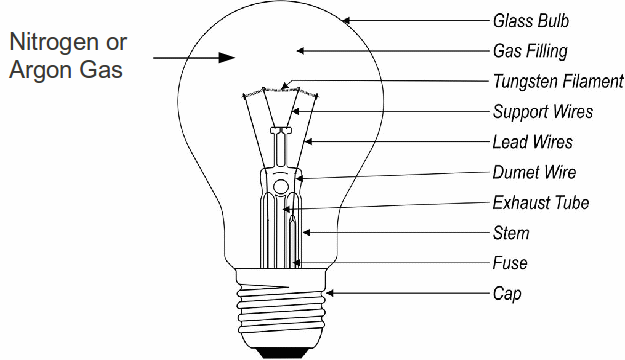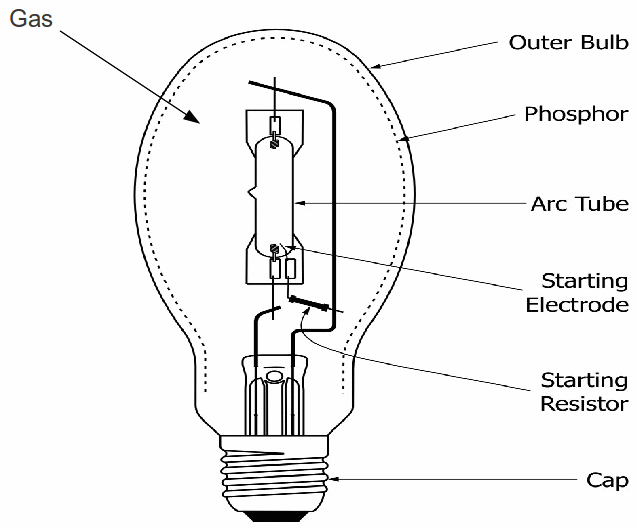{source} P >Filament lamps consist of a tungsten wire in a glass bulb filled with argon or nitrogen at low pressure. When the lamp is turned on it operates at a temperature of over 2000 degrees Celsius. The small amount of gas enables the lamp to be run at a higher temperature, meaning that a higher proportion of electrical energy is converted to light.

Discharge lamps consist of gas at low pressure glass tube with metal electrodes at each end. When a high voltage is applied the gas glows with a colour characteristic of the gas. The electric field set up inside the tube causes ions in the gas to move with high speeds. The ions collide with atoms in the gas, excitation of the atoms occurs, and when they become de - excited, light of a particular colour is emitted. Discharge lamps are about five times more efficient than filament lamps.
Fluorescent lamps are similar to discharge lamps with the difference that the inside of the glass tube is coated with minerals. Part of the light emitted by a discharge lamp is in the ultraviolet region. When the light hits the minerals that coat the inside of the glass case they emit visible light of certain colours. Several minerals may be used to produce light of the required colour.

